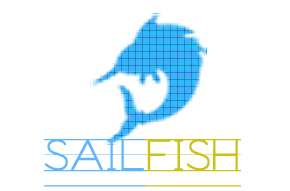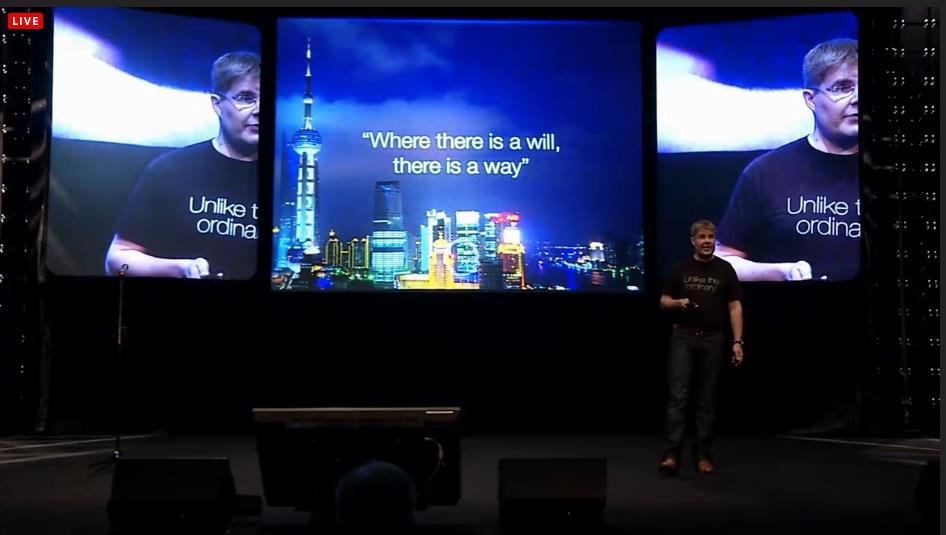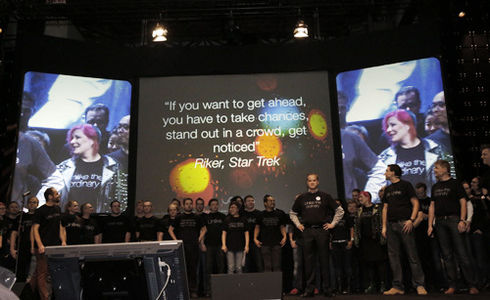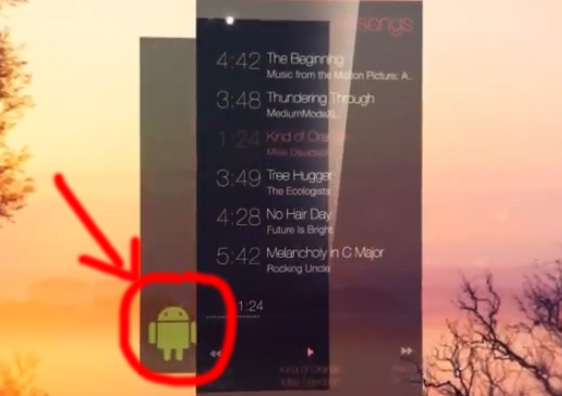“Where there is a will, there is a way.”
This age-old adage – among plenty of other similarly motivational anecdotes – adorned the screens of the main stage at Slush 2012, the largest tech conference in Northern Europe, when Jolla took to the stage. For many, this is the first time that the name Jolla has been heard, but for those who have been closely following the community developers in the year or so since the launch of the world’s first and only MeeGo smartphone, Jolla represents hope: the flag-bearers of what should have been the biggest thing in mobile technology since the launch of the iPhone.
Jolla’s Sailfish OS is the product of a team that were essentially assembled from ex-Nokia developers from the MeeGo team as well as community developers from around the world. Picking up where both Nokia and the community left off, Jolla’s developers adapted the work from the Mer and Nemo projects to build Sailfish’s core, and developed a new user interface (UI) from the ground up. The big reveal at Slush was the culmination of a year’s worth of late-night independent bug testing, coding and programming – just what one would expect from a team with a significant amount of community developers. Corporate culture? What corporate culture?

This is a company whose aspirations to disrupt the status quo of mobile OSes make them profoundly interesting, and something consumers should take notice. In the words of CEO Marc Dillon, the world is growing tired of the current selection of smartphones. This is where Jolla is hoping to step in with Sailfish OS. Retaining most of the innovations developed back in the days of MeeGo-Harmattan, and then adding more of Jolla’s own flavour, Sailfish OS was built to run on almost all unlocked smartphones, from flagships to $100 smartphones.
And, as part of their business model, the source code is available for anyone to use – opening a new avenue for Sailfish OS to grow, instead of just relying on Jolla-branded phones. Not only that, Sailfish OS was also developed to be fully flexible and can be scaled to run not just on smartphones, but tablets, pocket PCs, smart TVs and even on car navigation systems.
So, can Sailfish OS be what MeeGo could have been? Or is the entire movement a classic case of too little, too late?
Too little, too late?
To answer the above questions is extremely difficult. For one thing, time is clearly not on Jolla’s side. When you consider the first Jolla smartphone running on Sailfish OS will only be launched in the summer of next year, the challenge will be on Jolla to continue to remain relevant to the market for the following months.
Indeed, Sailfish OS really does feel like a latecomer. While the UI is ready, the OS itself isn’t fully fleshed out and ready for consumer use. It was painfully obvious when watching the “extended” UI demo after the keynote speech, where Jolla engineers showed off the same features that were already presented during the keynote speech.
Worse still is when you consider that the next iteration of the Android OS widely expected to be ready soon. And, a potential nail in the coffin for Jolla could be another OS that is yet to be launched: BlackBerry 10. With its MeeGo-esque gestures and features coupled with BlackBerry’s unrivalled expertise in mobile security, BB10 – scheduled for an early 2013 launch – could just be what Sailfish is hoping to be.
One home screen, is it enough?
Delving into the OS, one thing got me thinking: is one home screen enough? Even the simplistic nature of MeeGo-Harmattan needed three. Sailfish OS took away one of those, one that I personally feel was very useful: the notifications/events home screen.
As someone who greatly relies on a smartphone to schedule reminders and meetings, I use the calendar app a lot. A simple tweak on the Nokia N9 streamlines these calendars as well as the central notification system on one home screen. Hence, all the information I need is simply one glance away.
Taking away this crucial screen would really affect productivity. While the multi-tasking screen is particularly unique, Jolla may have just over-simplified the UI, losing more ground to the productivity-focused BB10.

Double-edged Sword
Another legitimate concern for Sailfish OS would definitely be on apps. Let’s face it, Stephen Elop had a point. It’s not ideal and definitely a harsh truth, but a mobile OS lives on and needs apps to thrive and grow. Naturally, this played a part in the culling of MeeGo. However, with MeeGo and Android both based on Linux, it was theoretically possible for Android apps to run on MeeGo. In fact, there were some efforts that were done for the N9: some community developers managed to boot Android 4.0 and even 4.1 on the N9. Myriad’s Alien Dalvik and ACL’s OpenMobile both developed compatibility layers to run Android apps on MeeGo-Harmattan, but never quite had the resources to fully flesh them out.
It took a while, but the efforts finally bore fruit on Sailfish OS. Jolla has confirmed that most Android apps will run natively on Sailfish OS, making the argument over the lack of an ecosystem null and void.
However, when you look a little closer, the ability to run Android apps natively on Sailfish is a dangerous double-edged sword. On the one hand, Sailfish will not face issues with lack of apps. But on the other hand, there is genuine concern on whether these apps will not just run on Sailfish, but if they would run smoothly.
Android app developers are not afforded the same financial perks to develop highly polished apps like iOS developers. There is no impetus to refine their apps to run efficiently on a variety of hardware. With that in mind, can we expect a particularly demanding app to run smoothly on Sailfish, an OS that is designed to also work on cheaper hardware? Will this throw Sailfish OS into the same specs race as Android, where it needs more and more processing power than it would ideally require?
Another concern would be on the Android app developers themselves. These developers code for a living. If their apps already can run natively on Sailfish, why should they optimise it for Sailfish, especially when the monetary rewards is still a mystery? What perks can Jolla as a company offer to developers to entice developers to stimulate its own ecosystem, other than the relative ease of building apps using Qt Quick?
Cautious optimism
At this point many would definitely wonder why, after so many criticisms, I am still cautiously optimistic on the success of Jolla and Sailfish OS. The answer is simple, really. If the Jolla initiative takes off, it will change the landscape of mobile technology.
Think about it. With an OS that will run on almost every electronic device you own, everything will sync to move around you. Information you saved on your smartphone is automatically synced to your desktop or tablet and vice versa, so your digital life travels with you, regardless of what device you use. You start your car in the morning on the way to work, and your in-car navigation system syncs to your smartphone, reading aloud your appointments and schedule for the day. Calls and texts are redirected to the car’s computer, so you never have to take your hands off the wheel to reply a text or answer a call. In the office, you can sync with your home’s TV to schedule a recording. With such effortless integration between devices, the possibilities are endless. Imagine what Apple has with its integration of iOS and Mac OS, or Windows 8 and Windows Phone 8, but on a far deeper level. That is what Sailfish is aiming to achieve.
Also, don’t forget that this is first and foremost a smartphone OS. As it is the UI is uniquely innovative and intuitive. It takes more than screen sizes to make one-handed usage a breeze, and Jolla built its OS to be effortlessly navigable with one hand. Also, with true multi-tasking capabilities, you decide what apps are open, not the OS.
On the other hand, developers have their perks, too. With an open garden to work on with Sailfish OS, there are no restrictions or limitations to tweak the capabilities of Sailfish and its apps. The Jolla movement was born from a community of developers who believed in the platform, and is a key component of the benefits of an open-sourced OS like Sailfish.
Jolla is fully aware of all of these, and perhaps even more. The risks of spectacularly failing is definitely there, and the development progress of the OS is less than ideal. But a platform that has so much potential to redefine mobile technology is definitely a gamble worth taking, and is probably what drives the team behind Jolla.
Follow us on Instagram, Facebook, Twitter or Telegram for more updates and breaking news.





 Image credit: taskumuro.com
Image credit: taskumuro.com
